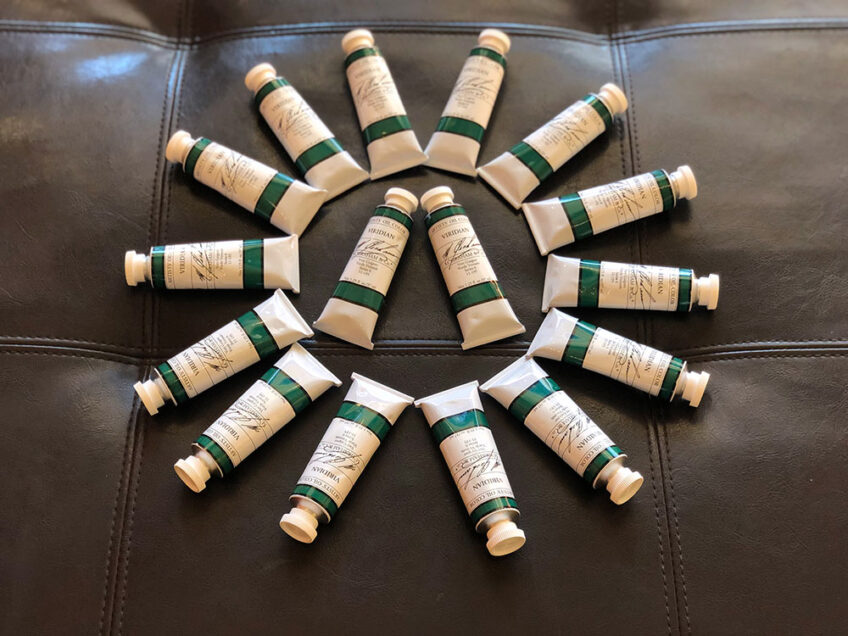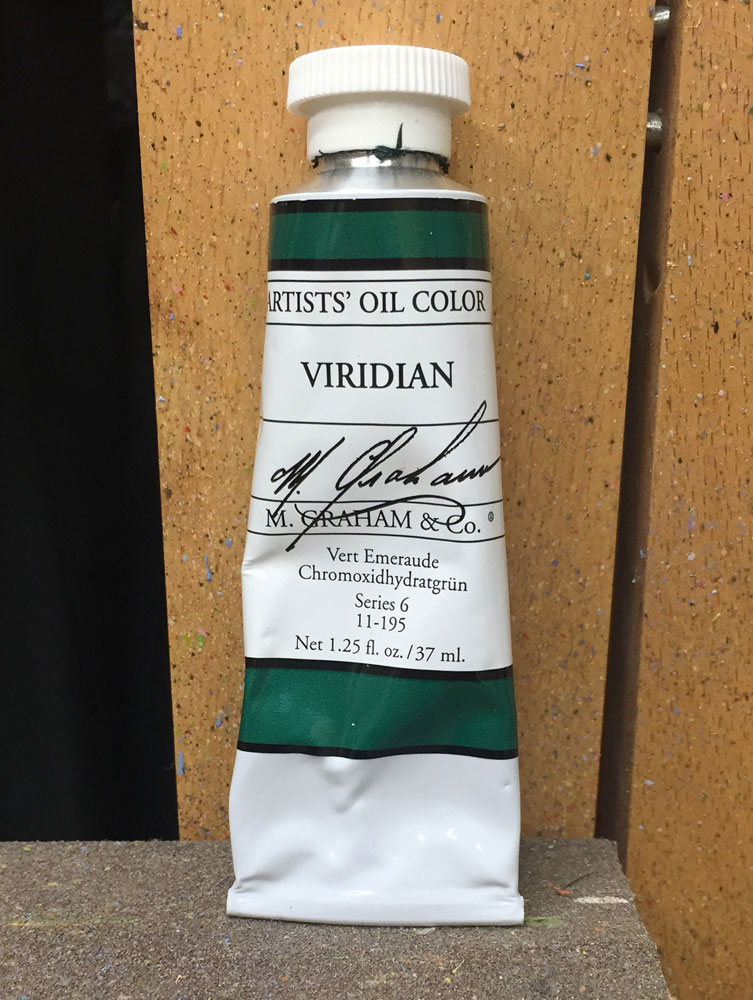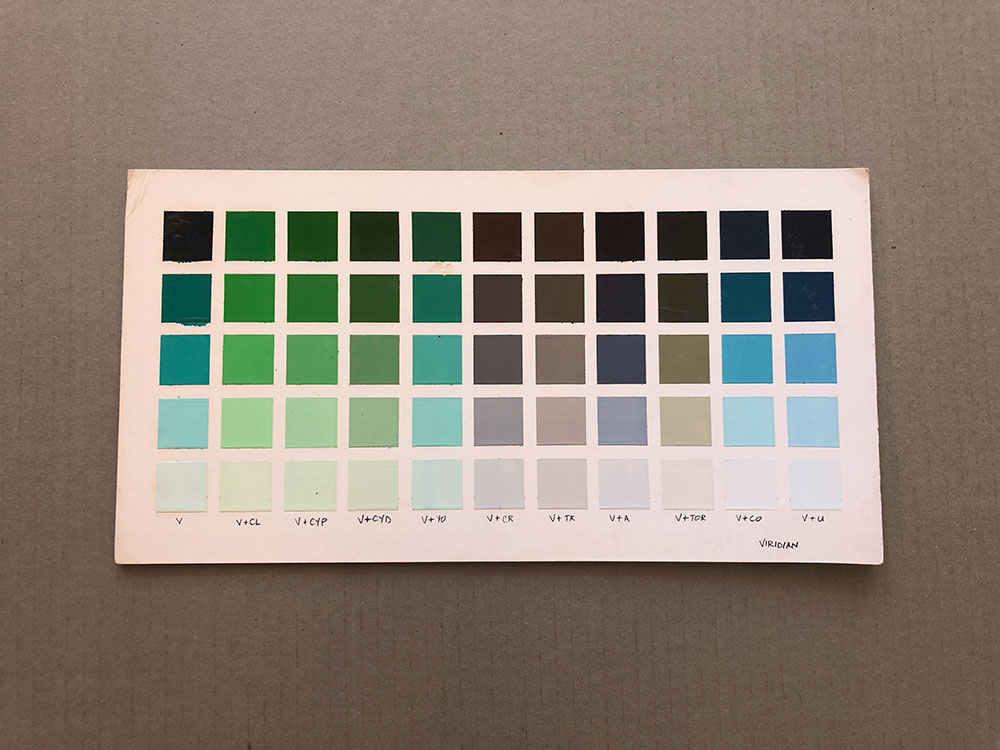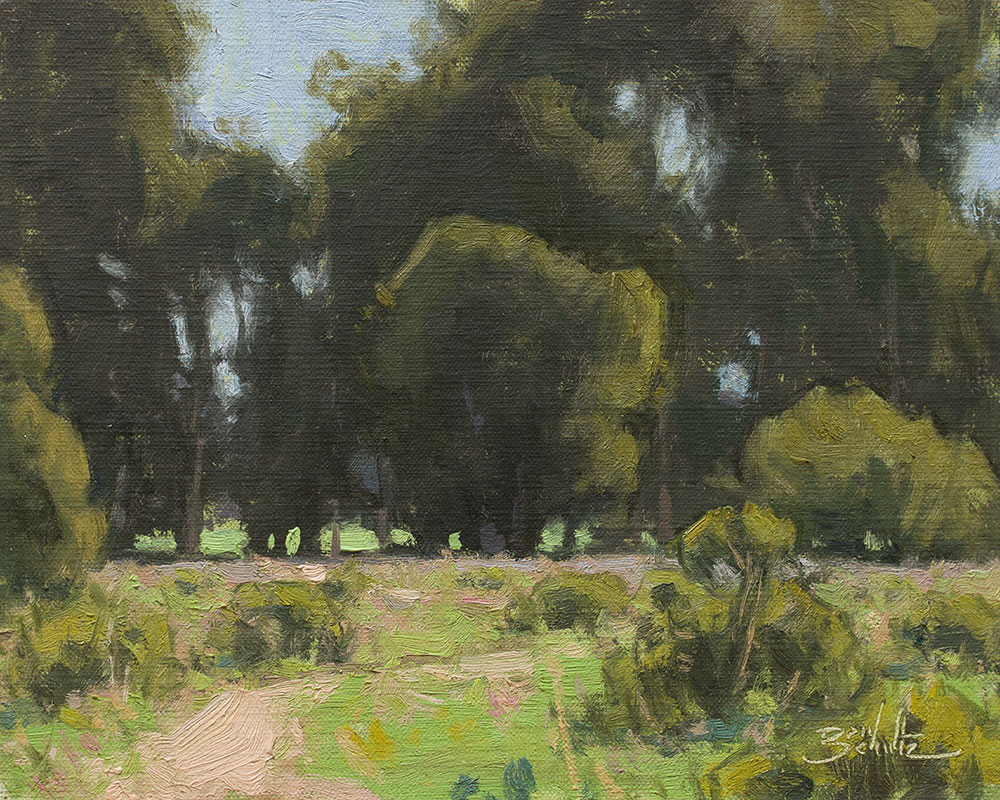The color green is a difficult one to master. There are so many varieties of it in nature that painting accurate greens can be daunting. We find everything from intense yellow-greens to muted gray-greens, blue-greens, acid-greens and subtle light-greens.
But don’t let those greens scare you! We can improve our ability to mix accurate and believable greens. Here are seven tips that have been helpful to me for painting accurate greens.
1. Carefully Choose Your Palette Green
Years ago, Sap Green was the green of choice on my palette. One day I began to notice that all the greens in my paintings were looking very similar. Sap Green was average-looking enough that I was lazily using it for all my greens without much mixing. I wasn’t paying attention to make sure I was mixing accurate greens for all the unique greens in the landscape.
So I replaced Sap Green on my palette with Viridian. This choice forced me to take more time to mix my greens. Viridian is such an unusual green — it isn’t seen purely in the landscape — so in order to create accurate green mixtures, I have to mix other colors with it.
A nice byproduct is that I discovered Viridian to also be very useful for mixing complementary grays.
As a side note that many of you know already, I prefer M. Graham & Co. oil colors and I highly recommend their Viridian. It’s a beautiful color with plenty of pigment and is holding up well in my ongoing color stability tests.
2. Make a Color Chart
The fantastic book Alla Prima by Richard Schmid contains a section on how to go about making color charts. They take a bit of tedious work, but they can be an eye-opening exercise.
A chart based on your chosen palette green will show the remarkable range of green mixtures your green can make when mixed with your other palette colors.
3. Identify Characteristics
Do your best to find ways to describe any particular green that you see. Answer the following questions:
- Does the green lean towards a particular color family?
- Is it light or dark?
- Is it intense or dull?
Once you have a description in your mind, you’ll have a better idea of how to go about mixing that particular green.
4. Be Patient
A major challenge with any color mixing is the temptation to be lazy. To let “close enough” be close enough.
Even when you have time limitations, do your best to be patient when mixing colors. Don’t move on until you’re as close as you can get to matching the colors you see.
In my opinion this is the best way to improve your ability to recognize colors and match them with your paint. Even if you struggle to finish because of the time it takes, you will see improvement in the long run.
5. Compare Your Mixtures
Use your palette to compare your color mixtures. When mixing your colors, let the mixtures actually run into each other. Where they overlap a bit, you can squint and compare their relationships right there on your palette, giving you a preview of how they will relate in your painting.
6. Paint Green Scenes
One of the best exercises for practicing green mixtures is to paint scenes with lots of greens! Find an image of some green bushes and green trees casting green shadows on a green meadow and go for it. If you wear a green outfit it’s even better. 😁
7. Paint Outside
Plein air painting (painting outdoors) has been one of the most important keys in my development. It provides the opportunity to see the real colors of the outdoors. It has given me a better understanding of how light behaves and has helped me recognize the true value and color of shadows.
All the varieties of natural greens are waiting for you outdoors. Get out there and get to work on capturing them.
I hope you’ll find these tips to be helpful as you work toward painting accurate greens. If you have other thoughts, leave a comment below!




16 Responses
Gayle Martin
Thank you, Dan. I always appreciate your insight and learning how to become a better painter.
Diane Jay
Your advice has always been a beacon, Dan. Thank you!
Sheppard Bear
Always helpful!
Paula
Love the “be patient” tip…painting outdoors pushes that a bit. Wonderful words, many thanks!
Ria
Thanks very much, Dan. I’m a fan of your paintings as well as your teaching.
Laurie Hendricks
Thank you, Dan! I really appreciate how you take the time to carefully explain the steps you go through to mix greens accurately. This is vauable information for artists of all levels.
Marilyn Rose
Good advice to take time to mix the right color. Thanks for the reminder. I’m glad to hear you advocate mixing various greens with viridian rather than rely on several tube greens. I like the color harmony it creates.
Mary J Snider
Thanks, Dan, I appreciate your advice and information. I was struggling with a green scene. It is a good time of year to do a color chart and when the weather is nicer, I plan to get outdoors to paint, even if it is sketches in watercolor and gouache.
TinaC
I really enjoyed your painting of the citrus grove in the Ojai show. I was amazed at how many different greens you used to turn the form of the citrus trees.
Lovely work!
Dan Schultz
I really appreciate your comments, everyone!
Linda Navroth
Thanks for taking the time to share these tips. Excellent ideas.
Rani
This is a great time of year here in California to paint lots of greens in the landscape. Thank you for this information.
Karen Storm Solorzano
YES, DO THE COLOR CHARTS!!!
Thank you Dan. You have a great deal of insight and knowledge. I have always disliked Viridian, but it seems to be a basic on so many people’s color charts. That being said, about a year ago I did the color charts using the basic Richard Schmid colors. Yes, they are tedious, hard work but there is no substitute for doing them. As Richard Schmid said they develop patience which is a prime requisite for an artist.
Many plein air painters do not have green on their palette. They prefer to mix greens e.g. — (Ultramarine blue + yellow ochre), (cobalt + cad yellow). T. Allen Lawson did the color charts using 18 colors (that is what he has in his stable of colors). Can you imagine? Not in this lifetime.
Gary Bradley
This is a good contribution Dan. Paint away
Rebecca Prosino
Hi there, I just found your blog here too. OK for re viridian, do you also use it in the rest of your pallette, like when you need to grey down a red for the shadow side of something red, or do you really only use it when you’re painting things that are green? (There’s tons of green where I live, and I have never felt successful capturing it with my three primaries).
Dan Schultz
Viridian is the only green I use on my palette, so I definitely use it for graying down reds and making other grays. Even when I limit my palette, I usually want to keep viridian out as well as a strong yellow (like M. Graham bismuth yellow or cadmium lemon) for mixing strong spring greens. But like I said in this post, green is one of the most diverse colors we encounter in the landscape so it takes patience and time to recognize all the varieties and to match them with paint. Keep at it!